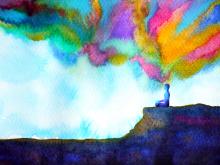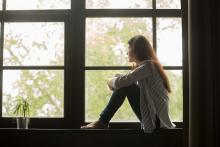mental health
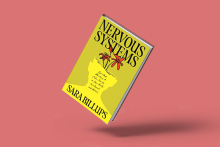
IF YOU'VE SPENT some time in church, you’ve likely heard a sermon on Jesus’ instruction, “Do not worry.” But how do we actually do that? Can we actually do that? In Nervous Systems, author Sara Billups grapples with “the dissonance between the head reading ‘do not worry’ and the heart worrying.” And while Billups seeks to align her head and heart, she does not claim to have found a spirituality that magically dispels anxiety. “My anxiety did not dissipate,” she writes. “Instead, God met me repeatedly in its very presence.”
With a mix of memoir and critical reflection, Billups explores how God meets us wherever anxiety dwells—in the human body, the church body, and the body politic. Billups, who has a doctor of ministry in the “sacred art of writing,” relies on both research and personal experience to guide her. She weaves in her exploration of Ignatian spiritual practices as a tangible way to seek God’s steadfast presence in anxious times. Reflecting with candor on her anxieties around health, aging parents, motherhood, church, and politics, she captures the nuance that Christian discussions of anxiety—the ones that might boil down to “just pray more” or “trust God more”—often miss.
I appreciate Billups’ emphasis on being “faithful and present” in our lives, relationships, faith communities, and world. For her, fidelity and stability are spiritual practices. In a time when “our anxiety manifests acutely in political polarization,” as Billups writes, we need a spirituality that grounds us. We need a faith that reduces our defensiveness and pushes us to engage with diverse communities out of a desire to love, rather than a need to control. “Political anxiety is stoked,” Billups writes, “when we are not well-formed and spiritually mature.”
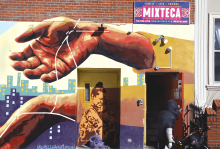
WE SEE HIGH levels of stress and anxiety in immigrant communities. At Mixteca, we provide direct services for immigrants, like “know your rights” and legal clinics, but we incorporate mental health components. People may be waiting to meet with the lawyer, and we have little packages with lavender, a stress ball, something you can smell, touch, and hear to activate the five senses. We get feedback from the community like, “I don’t know why, but I feel better when I meet with my lawyer here.” We create spaces where the community feels safe, or safer than other places.
I don’t know if we are safe at this point. People ask, “Can I send my daughter to school?” [We see] kids whose parents were deported struggling to make a living. People ask “Can I go to the hospital and have my surgery? I need it, but I don’t want to get deported.” Others say, “I’ve been in this situation for many years. Immigrants are under attack every day from the day I got here.”
Being here in the front line, it’s heavy on us as well. Imagine listening to one person and then the next one, and the next. As an immigrant, I feel honored; this is what I want to do with my life. I don’t have to push my team to take care of others, but I have to push them to take care of themselves, because I know that is the hardest part for us. I burn palo santo. It was used by my grandma to clean a space. The smell really helps me to center. I usually do it in the morning, or any time I feel like the day is really heavy: Just burn my palo santo and bring my ancestors, my abuela and whoever needs to be here to support with the heaviness of the work.
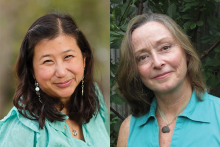
DORCAS CHENG-TOZUN, author of Social Justice for the Sensitive Soul (Broadleaf), wanted to be an “unceasing voice” for social justice. “And while I was busy saving the world,” she writes, “I would also be the kind of person who’d happily sacrifice anything for a good cause.” But 10 months after Cheng-Tozun moved from the U.S. to China to set up an operations office for her spouse’s solar business, thrilled at the possibility of providing affordable electricity to billions of people, she experienced the “worst and longest panic attack” of her life. For more than a year, she could do “little more than sleep and cry and journal.” A crucial, difficult question arose: “Why can’t I handle what everyone else seems to be managing perfectly well?”
For Trish O’Kane, author of Birding to Change the World (Ecco), the breaking point was Hurricane Katrina, which destroyed her New Orleans home and neighborhood. “After a disaster,” O’Kane reflects, “you just can’t do as much. Nor should you. You need time to think, to ponder ... I needed a great slowing down.” She took up knitting, spent long hours outdoors on the ground “watching the clouds change shape and bumblebees loading their back legs with pollen and the yard birds going about their business.
Like Cheng-Tozun’s year of sleeping, crying, and journaling, these months surfaced life-changing questions for O’Kane. “I could feel my question changing,” O’Kane writes, “from What should I do? to How should I be?”
In their respective books, Cheng-Tozun and O’Kane write from the other side of activist burnout — something Cheng-Tozun experienced after working for multiple social justice organizations, and O’Kane after working in human rights journalism in conflict areas, both for many years. Both writers ponder how to change, heal, and move forward. Birdwatching was the gateway for O’Kane, while Cheng-Tozun found herself reflecting on sensitivity, introversion, and the many ways people are wired with different gifts to offer. They have different backgrounds and stories — Cheng-Tozun is now a writer and consultant who most recently worked for a Christian nonprofit that equips BIPOC contemplative activists; O’Kane is an environmental educator who created the “Birding to Change the World” program at University of Wisconsin-Madison — but both authors offer a similar invitation to those who yearn to make a difference: Learn to embody gentler, more sustainable ways of doing so.

AT 16, WHEN I finally named that I had an eating disorder, I stood in the doorway of my bedroom and Googled “patron saint for people with eating disorders.” Knowing I needed help, I first looked for guidance in my faith tradition. It began a lonely and shaky journey of figuring out what faith means in the context of my yearslong struggle, why this was happening, and what to do when answers weren’t there.
Anna Gazmarian’s Devout: A Memoir of Doubt traces her evangelical upbringing and bipolar diagnosis as she searches “for a faith that can exist alongside doubt, a faith that is built on trust rather than fear.” Growing up, Gazmarian was taught in church that depression signals a lack of faith, recalling a time a pastor told the congregation that his bipolar diagnosis was caused by his own sin. As she seeks treatment, Gazmarian engages with scripture through her experiences of mania and depression, doubt and despair, looking for validation and comfort between the lines of Bible verses.
Gazmarian’s prose is clear, engaging, accessible, and alive. With gentleness and compassion — toward herself and all who struggle with mental health — she writes about how she learns to believe that God is with her.

THE REMAINING LISBON sister are sprawled in their bedroom when the priest knocks on their door.
“Hello girls, I thought we could talk. Do you feel like talking?”
Their returning stares are vacant and unknowable, and the priest wears only the pretense of concern. Both parties maintain their false decorum, neither fully able to acknowledge their shared grief: the suicide of Cecilia, the youngest Lisbon sister, only 13 years old.
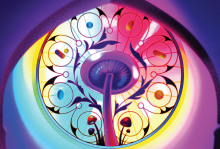
IT WAS DARK. Totally dark and empty. Andrea Smith felt a familiar hopelessness. “Of course I’m all alone,” she thought. “It’s my greatest fear.”
Smith, a pastor in the United Methodist Church, was at the Johns Hopkins Center for Psychedelic and Consciousness Research in Baltimore, in the first moments of a psilocybin trip designed for clergy.
“I didn’t know crap about psychedelics leading into it,” Smith told Sojourners. Through work with the center before her 2019 experiment with psilocybin (a psychoactive ingredient found in some mushrooms), she was prepared to possibly meet her greatest fears — some participants even reported seeing their own death. At first, that’s exactly what happened.
Smith’s profound childhood trauma — her mother suffered a fatal aneurysm in front of her at age 9 — had instilled an existential fear of being alone, she realized, which had led her to the brink of self-destruction. Burnt out in ministry, avoiding the truth about her husband’s infidelity, and grieving the death of her father, Smith entered the Johns Hopkins study in a fog of depression. She was considering returning to the antidepressants she’d stopped years before. “I was broken,” Smith said. “I was just exhausted and spent.”
During Smith’s psilocybin treatment, something shifted. She described moving “in and through” increasingly abstract and light-filled imagery that led her on what was ultimately, she said, a journey of redemption and forgiveness. She never got back on antidepressants, because the depressive fog lifted almost immediately after her psilocybin treatments. Smith credits the psilocybin experience with her ability to make major life changes.
The scientists at Johns Hopkins paved the way for contemporary research into the unique pharmacological properties of organic and synthetic compounds known collectively as “psychedelics.” In 2000, the Johns Hopkins team obtained the first regulatory approval in the U.S. to restart research into psychedelic use with healthy voluntary subjects. In 2006, the team published the first wave of results on the “safety and enduring positive effects of a single dose of psilocybin,” which helped catalyze a worldwide resurgence of psychedelics research.
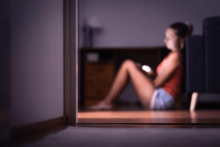
Two years ago, I spoke to one young woman with obsessive-compulsive disorder as part of my research into discipleship and depression. After this woman had received her diagnosis, some well-meaning but ill-informed members of her church instructed her to pray and read the Bible more. Because of their advice, she said, “I was always wrestling with whether it was spiritual warfare.” This spiritualization exacerbated her mental health struggles, adding on a religious component to her symptoms, including compulsive prayers and other spiritual practices to gain God’s favor and find healing. When it comes to accompanying young people through mental health challenges, I know the church can do better.
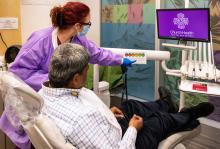
IN SEPTEMBER 1987, ordained Methodist minister and practicing physician G. Scott Morris opened Church Health, a faith-based health care center in Memphis, Tenn. The first clinic tended to 12 people. Over 35 years later, more than 80,000 different individuals have come through Church Health’s doors. When they started, Memphis was the poorest city in the country, but Morris and companions didn’t open Church Health center as an act of charity. Church Health’s mission has always been about demanding justice. His book Care: How People of Faith Can Respond to Our Broken Health System tells the story of clinics across the U.S. where people practice Jesus’ command to heal. — The Editors
I FIRST CAME to Memphis in 1986. Having completed my theological and medical education, I was determined to begin a health care ministry for uninsured people working in low-wage jobs. I had dreamed of this for years as I slogged my way through the training that would make it possible. When the time came, I chose Memphis because historically it is one of the poorest major cities in the U.S. Today we see patients in clinics for primary care, urgent care, dental work, and optometry services. Behavioral health, life coaching, and physical rehabilitation are integrated into our clinics, and we have a teaching kitchen offering classes on culinary medicine for patients and the community. The Church Health model is used in more than 90 clinics around the country. There are about 1,500 free and charitable clinics in the U.S., many of which have faith-based connections.
God calls the church to healing work. Jesus’ life was about healing the whole person, and Jesus is the church in the world. Tradition suggests that Helena, the mother of the emperor Constantine, was the first to open a hospital specifically to care for the poor. The ancient world never had a system to care for the sick who were poor until Christians offered hospitals. Even Julian the Apostate, a fourth-century Roman emperor who did not have much use for Christians, wrote, “Now we can see what it is that makes these Christians such powerful enemies of our gods, it is the brotherly love which they manifest toward strangers and toward the sick and poor, the thoughtful manner in which they care for the dead, and the purity of their own lives.” We are still Jesus’ disciples, the body of Christ running after God’s priorities in the world together. What does it look like to have a healing ministry in today’s world?

HAVE YOU EVER had one of those perfect moments?
My wife and I sat on a bench at the farmers market with a plate of steaming hot tamales before us and a bag of crisp fennel bulbs, Pink Lady apples, and fresh spinach at our feet. The air smelled of salt and cooking oil. A deep yellow and iridescent gold light wrapped around us. Every noise fell away in a holy hush. We met, however fleeting, the “still point of the turning world” described by poet T.S. Eliot. Held and beheld.
To be honest, I usually miss these moments. Though I try (religiously) to keep custody of my mind and attention, the world we live in now beeps, dings, buzzes, and updates 24/7. It’s hard for God to break in. Perhaps this description of digital architecture’s pointed intrusions into our one beautiful life is too minimalist. Most days, I’m holding my breath against the crushing dynamics of digital onrush and knowledge outflow. I miss the still points between the crest and lip of that wave.

EVEN IN MY earliest memories, I was consumed by terrifying worries and did everything in my power to alleviate my deepest fears. When I was 8, I can remember being plagued by guilt following the death of my aunt to cancer, worrying that it was somehow my fault. Intrusive thoughts and images flooded my mind at night, and I called my parents into my room to confess, seeking reassurance that I was not a dangerous monster. As I grew older, my fears began to consume every single area of my life that was important to me. By college, I was afraid to sleep out of fear that I had left the stove on or the door unlocked. And by graduate school, I moved through my day wondering if I had called people derogatory names or written horrific things in birthday cards before blocking the memories out. I repeatedly checked the stove, took pictures of locks, and called friends to make sure I hadn’t somehow caused harm. At the time, I was unaware that these acts, known as “compulsions,” only made my condition worse.
In my early 20s, I learned that I was experiencing the symptoms of a diagnosable mental illness known as obsessive-compulsive disorder (OCD). OCD is often represented in television and movies as something laughable—think Tony Shalhoub’s Monk. In reality, OCD is far more serious: a debilitating disorder defined by unwanted obsessions that terrify the sufferer and compulsions repeated over and over to alleviate overwhelming fear, guilt, or anxiety. Some obsessions might relate to more commonly known themes of contamination or organization, while others might include culturally taboo themes involving violence or sex. But they are all equally painful to those caught in OCD’s grasp.
We all have thoughts—happy, sad, violent, intrusive, and strange. But those with OCD tend to place more value on these thoughts, concerned that they may be true. When time spent experiencing these obsessions and engaging in compulsions impedes functionality, that’s when it becomes a disorder. But even in my struggles, I feared documentation of an official diagnosis would negatively impact my pursuit of ordination. I had always heard that we should turn our worries to God, so I wondered what those approving my psychological evaluations for ministry would think if they viewed me as in need of mental health treatment that could not be solved through prayer.

HOW HAS THE pandemic changed you? This question can feel loaded, as though our answers should contain revelatory insights or transformational changes in our mindsets or lifestyles. My answers have varied. Since the pandemic forced my intense travel schedule to come to a screeching halt, I’ve realized just how unsustainable that schedule, with its impact on my family life, had become. I look forward to returning to traveling soon, but I am determined to be much more selective about it. I also often reflect on the ways that my family deepened our love for nature during the pandemic, breathing in the beauty of God’s creation. These are just a few of my answers.
But for some of us, the question elicits anxiety about going back to the broken “normal” of pre-pandemic times. For many, lurking behind the question is a recognition that some of the ways COVID-19 has changed us may not be for the better, and some of our struggles during this time may not simply go away because we are vaccinated and can now resume social activities. Sadly, the pandemic amplified a preexisting mental health crisis in this nation. A New York Times article by organizational psychologist Adam Grant popularized a new term: “languishing,” which describes the state of feeling aimless, joyless, and unfocused. This captures a wide continuum between flourishing and full-scale depression. Languishing can also have a deep spiritual dimension: We feel a sense of spiritual fatigue and emptiness or even feelings of abandonment and anger toward God. They can be compounded by the inability during the pandemic for most of us to experience in-person fellowship and worship.
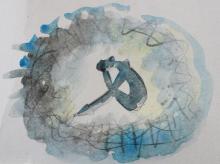
A recent report by Stop AAPI Hate, Brigham and Women’s Hospital, and the Asian American Psychological Association found that Asian Americans who have experienced racism are more stressed by anti-Asian hate than the pandemic. Further, it found that 1 in 5 Asian Americans who have experienced racism show signs of racial trauma.

I am no stranger to the ways that sports is often derided in faith and justice circles. But I contend that sports and competition offer valuable insights into what it means to be human.
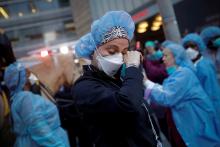
Normally, in moments very unlike our present, I could sit and laugh with extended family without fearing that my presence will expose them to an early death. I could get takeout without having to surgically remove the food from its packaging in a designated clean room like it’s a rupturing spleen. I could even venture to a quiet park where I’m passed too closely by a jogger or family of five without having my existential ire erupt out of me like a sermon, delivered only to my weary family on the way home. Most days I was able to have a tough day at work without having to forage for canned beans and toilet paper in surgical gear at our local Kroger as a nightcap.
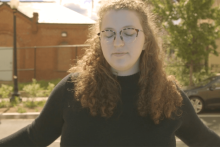
Writing poetry has helped me face all the fear and uncertainty that surrounds a lifelong diagnosis.

Speaking and preaching will only take a congregation so far. Real and sustained progress requires a change in cultures that demand people hide a part of who they are. “We must become congregations in which people are welcome to be their whole selves,” Snell writes. “When we do the work of making our congregations welcoming to those with mental illness, we can live into a vision of the fullness of the body of Christ, accompanying all and excluding none.”
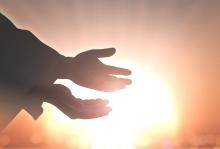
Our mounting anxieties are confronted in the psalm for the final Sunday of this month. Not the wear and tear of personal difficulties, but stress, fear, and exasperation at the flourishing of injustice, denial, mendacity, and exploitation. All exacerbated by the frenzied input of the media in which we are saturated. The psalmist speaks: Be still before the Lord and wait patiently. Do not fret over those who prosper, who succeed in evil schemes (see Psalm 37). The psalms do not prescribe withdrawal, tranquilizers, or techniques of self-calming, but stillness “before the Lord.”
Those who are emotionally tortured by the enormity of the damage being done to humanity by so many powerful people need a renewed spirituality for activists that derives its strength from a deepened intimacy with God. The psalmist shows the frankest awareness of the howling frustration that wreaks havoc with our physical and mental health and shreds our emotional availability to one another, and yet is certain that the only ultimate antidote is personal exposure to the joy and tenderness of God. “Take delight in the Lord, and you will be given the desires of your heart” (verse 4). Those who listen closely will hear echoes of this in other readings. Very tellingly Jeremiah urges, “Blessed are those who trust in the Lord, whose trust is the Lord” (17:7). Trusting in God, but more than that, experiencing the indwelling of God in our hearts and the pulsing trust from that heart living in us.
It is easy to overuse the word “prophetic” and tread it flat. We need scriptures like these to restore authenticity to our language about prophetic calling and ministry. Jeremiah recounts his experience of God’s call to be a prophet when he was still a youth. He resisted the call because he was still embedded in a culture weighted toward the kind of authority supposedly earned by years of experience. But a prophet must be disembedded from her culture to address that culture with God’s authority. And “experience” is often just a code word for initiation into the values of an unjust order. God challenges the normal requirement of experience, placing the prophet solely under the authority of God’s own promise. No experience necessary! I am reminded of God’s mordant skepticism toward society’s conventional valuation of experience in Charles Péguy’s great poem “The Mystery of the Holy Innocents.” Péguy writes: “As for what you call experience, your experience, I call it waste, diminution, decrease, the loss of hope.”
In Jesus’ confrontation at Nazareth with those who knew him only too well, he quotes a bit of folk wisdom: “No prophet is accepted in the prophet’s hometown.” By definition, a prophet is an outsider: She thinks outside the categories that form the common-sense worldview. And so she is drawn to the stranger and those on the fringe who are more likely to be open to acts of God invisible to conventional eyes. Jesus then scandalizes his former playmates by mentioning that the only successes Elijah and Elisha had at healing were with pagan foreigners. The congregation instantly changes into a lynch mob from which Jesus narrowly escapes.
Paul’s praise of love in 1 Corinthians 13 challenges our prophetic practice: “If I speak in the tongues of mortals and of angels, but do not have love, I am a noisy gong or a clanging symbol.” Prophets take their stand where God’s incandescent holy love meets human resistance. It is a perilous place where prophetic actions can insidiously draw on the dark energy of hostility and self-righteousness, and utterly forfeit their authenticity.

Everyone is supposed to love Christmas and the holidays. It’s supposed to be a time of family and gratitude. But I dread them. I dread the weeks leading up to Christmas, starting the day before Thanksgiving when Christmas carols begin permeating the radio and stores and build to a crescendo through Christmas Eve. The growing darkness in the absence of daylight saving time doesn’t help.
